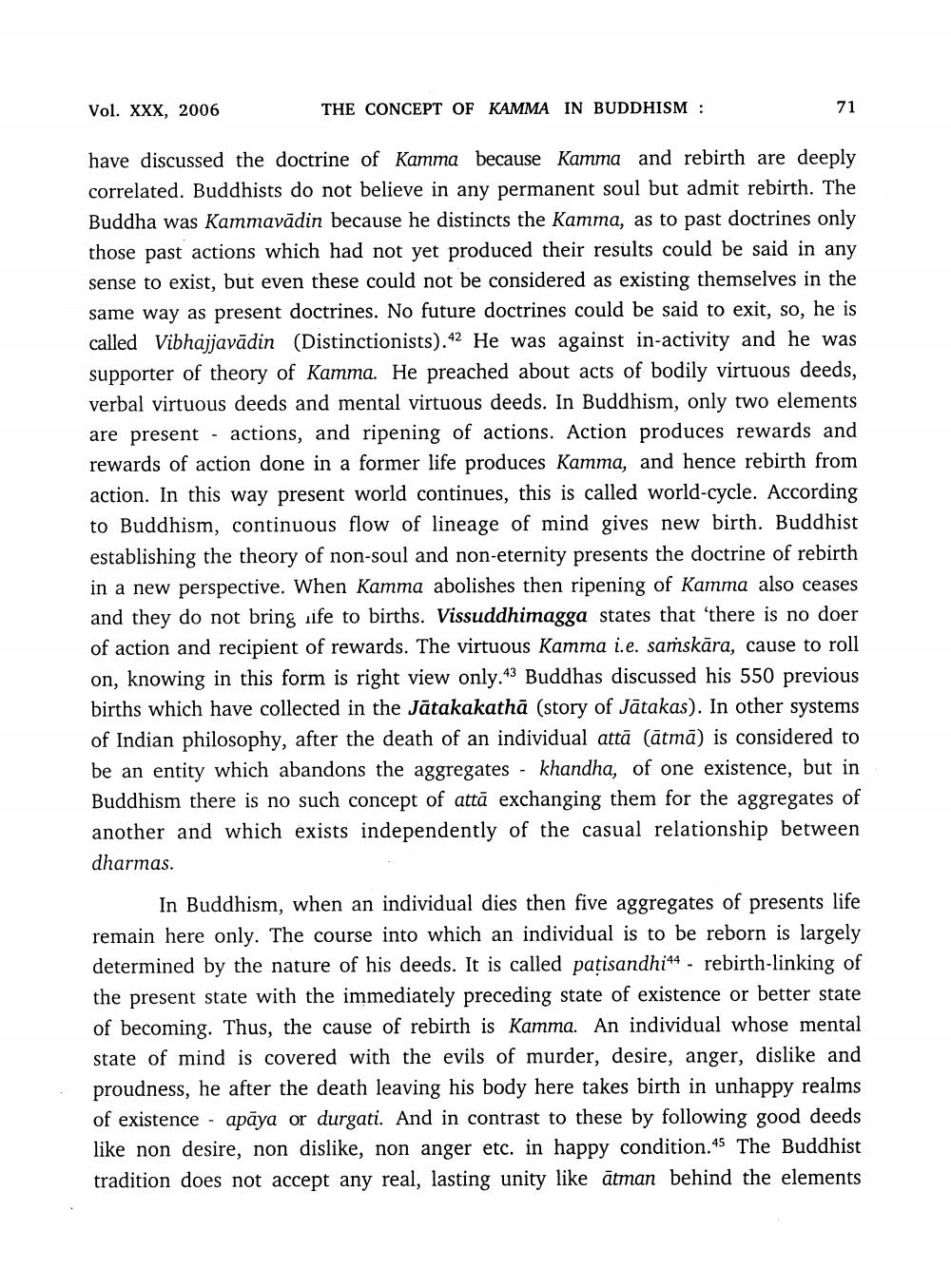________________
Vol. XXX, 2006
THE CONCEPT OF KAMMA IN BUDDHISM :
71
have discussed the doctrine of Kamma because Kamma and rebirth are deeply correlated. Buddhists do not believe in any permanent soul but admit rebirth. The Buddha was Kammavādin because he distincts the Kamma, as to past doctrines only those past actions which had not yet produced their results could be said in any sense to exist, but even these could not be considered as existing themselves in the same way as present doctrines. No future doctrines could be said to exit, so, he is called Vibhajjavādin (Distinctionists).42 He was against in-activity and he was supporter of theory of Kamma. He preached about acts of bodily virtuous deeds, verbal virtuous deeds and mental virtuous deeds. In Buddhism, only two elements are present - actions, and ripening of actions. Action produces rewards and rewards of action done in a former life produces Kamma, and hence rebirth from action. In this way present world continues, this is called world-cycle. According to Buddhism, continuous flow of lineage of mind gives new birth. Buddhist establishing the theory of non-soul and non-eternity presents the doctrine of rebirth in a new perspective. When Kamma abolishes then ripening of Kamma also ceases and they do not bring wife to births. Vissuddhimagga states that there is no doer of action and recipient of rewards. The virtuous Kamma i.e. saṁskāra, cause to roll on, knowing in this form is right view only.43 Buddhas discussed his 550 previous births which have collected in the Jātakakathā (story of Jātakas). In other systems of Indian philosophy, after the death of an individual attā (ātmā) is considered to be an entity which abandons the aggregates - khandha, of one existence, but in Buddhism there is no such concept of attā exchanging them for the aggregates of another and which exists independently of the casual relationship between dharmas.
In Buddhism, when an individual dies then five aggregates of presents life remain here only. The course into which an individual is to be reborn is largely determined by the nature of his deeds. It is called pațisandhi44 . rebirth-linking of the present state with the immediately preceding state of existence or better state of becoming. Thus, the cause of rebirth is Kamma. An individual whose mental state of mind is covered with the evils of murder, desire, anger, dislike and proudness, he after the death leaving his body here takes birth in unhappy realms of existence - apāya or durgati. And in contrast to these by following good deeds like non desire, non dislike, non anger etc. in happy condition. The Buddhist tradition does not accept any real, lasting unity like ātman behind the elements




